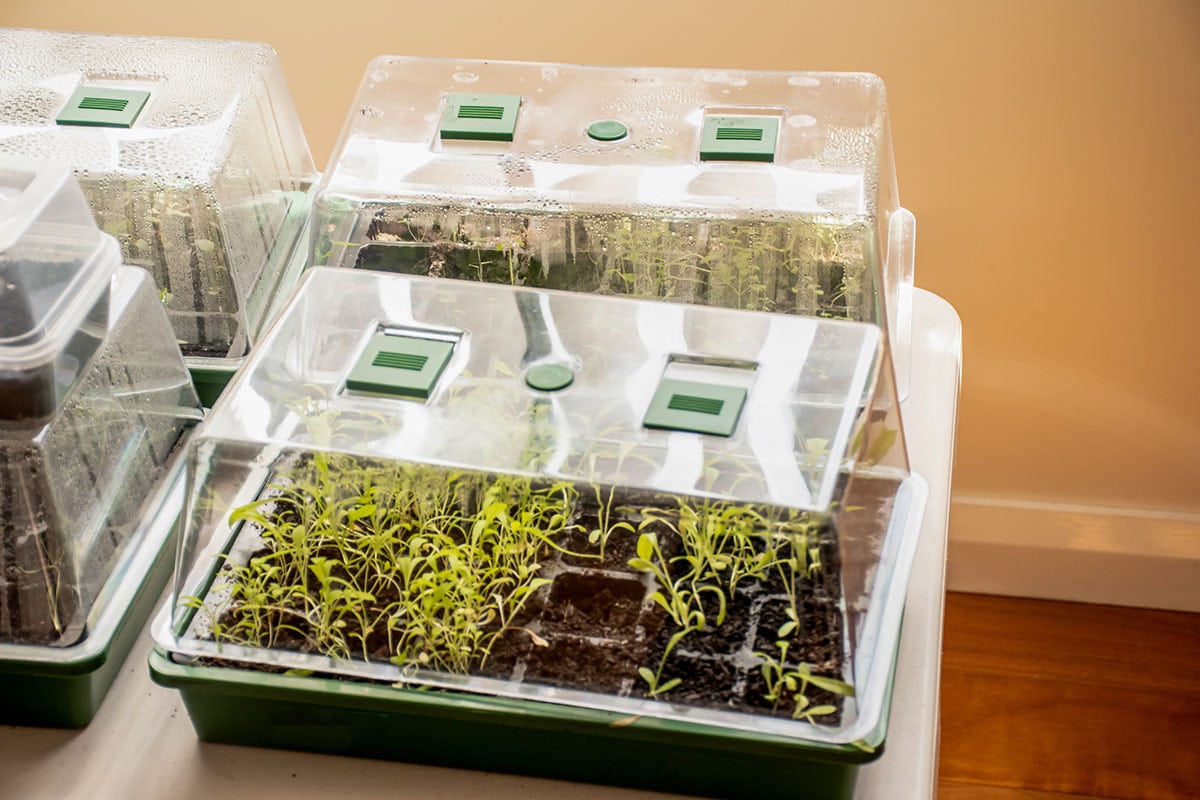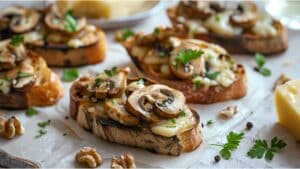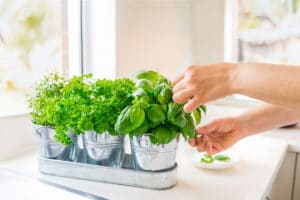Eating better is one of the most common health goals. Growing a vegetable garden at home not only allows you to have access to fresh and delicious food at your fingertips, but also to eat locally and even organically if you wish. A great way to have a well-stocked vegetable garden at a low cost is to plant your seeds indoors in the spring. Homemade seedlings are easy to do and require little equipment and investment. Additionally, it is the perfect opportunity to discover or have your children discover the pleasure of putting their hands in the ground and seeing the plants develop, step by step, and then feel the pride of consuming the fruit of their labour. It is even said that it is easier to make children eat vegetables when they grow them themselves… True or not? It’s worth a try! Here’s how:
You’ll need:
- Potting soil suitable for sprouts and seedlings
- Seeds of your choice
- Pots or containers for sowing
- Trays to hold your seedlings
- Plastic dome for humidity
- Identifier for your seedlings
- Spray bottle for water
It might also be a good idea to add:
Heating pad:
Although not essential, the heating pad allows you to increase the temperature of the soil by a few degrees and thus facilitate and improve the speed of germination of your seeds. It is placed under the germination trays and removed once the shoots start to appear.
Supplemental lighting:
Seedlings need good light, between 14 and 16 hours a day, to germinate. Since it is very difficult to replicate this light, supplemental lighting can be a great help. Choose a fluorescent or LED model, never an incandescent bulb, and place it 15 to 30 cm above your plants. You’ll need to adjust the height over time to keep the light at a safe distance from the leaves.
Plant now!
Not all seeds are the same and it is important to respect the needs of the plant when it comes to sowing. The seed packet will be a great help to know the distance to respect between the seeds, the depth at which to sow, the time needed for germination, etc. Always follow the manufacturer’s recommendations for best results. It is also important to know that not all seeds are sown at the same time. A schedule should be followed so that the plants will be at their peak when the time comes to transplant them to the garden.
Pro tips
To ensure that your seedlings grow well, make sure to keep the soil moist but not soggy. Because very young seedlings are fragile, use a spray bottle to water rather than a watering can. If you use a plastic dome and drops form inside, your seedlings have enough water, no need to add more. As soon as you see the shoots emerging from the soil, remove the dome and water regularly.
Also take the time to identify your seedlings. It may not seem like a big deal, but nothing is more like a seedling than another seedling. A small investment of time that is well worth it.
For more tips and tricks for successful seedlings, come and meet our garden centre advisors.






